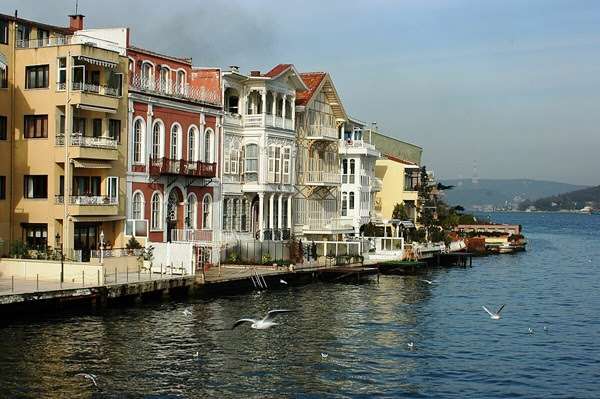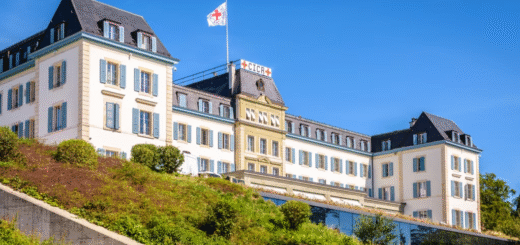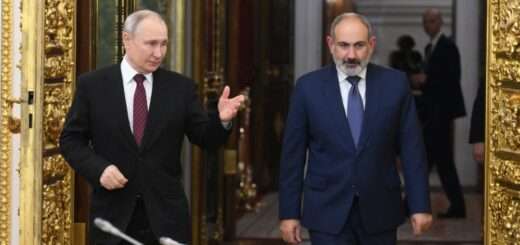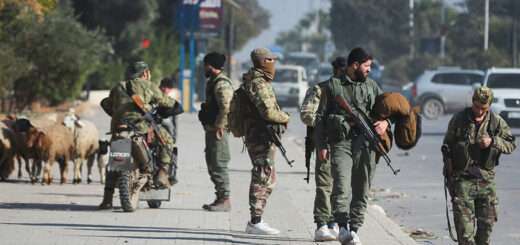The Yenikoy Accord: The Reform that Might Have Prevented Genocide

Keghart
In February 1914, in the Bosporus village of Yeniköy, the Ottoman government signed what seemed, at last, a blueprint for justice. Known as the Yeniköy Accord, it promised long-awaited reforms for the empire’s Armenians. The six eastern provinces, where most Armenians lived, would be reorganized into two inspectorates with European oversight. Property rights would be protected. Cultural and linguistic equality would be recognized. Governance would, at least in theory, move closer to fairness.
Armenians greeted the accord with hope. Many believed it would correct decades of abuse at the hands of Ottoman and Kurdish landlords, and undo the failures of the 1878
Congress of Berlin, which had promised reforms but never delivered them. For a people who had been second-class subjects for centuries, this looked like a chance at dignity within the empire.
But the plan came far too late. By 1914, the Ottoman state was a wounded power, seething from losses in the Balkans and suspicious of its Christian minorities. Hundreds of thousands of Muslim refugees had been resettled in Asia Minor, sharpening competition for land and intensifying hostility toward Armenians. The Committee of Union and Progress (CUP), led by Talaat Pasha, outwardly accepted the reforms but had no intention of implementing them. The inspectors-general, Louis Constant Westenenk of the Netherlands and Nicolai Hoff of Norway, never made it to their posts. With the outbreak of World War I, the CUP suspended the accord and, by December, abolished it altogether.
For Armenians, the collapse was crushing. It marked the last time they could hope for reform through negotiation. After decades of broken promises, Yeniköy’s failure destroyed whatever trust remained between Armenians and the Ottoman leadership.
The Turning Point That Wasn’t
Had Yeniköy—or something like it—been implemented thirty-six years earlier, after the Berlin Congress of 1878, history might have unfolded very differently. Armenians at that time still formed majorities in parts of eastern Anatolia. Their communities, though battered by Kurdish raids and government neglect, had not yet endured the Hamidian massacres of the 1890s or the demographic collapse that followed. Genuine reform could have meant land restitution, protection from violence, and a place in a federalized Ottoman system.
It is not an exaggeration to say: had Yeniköy been enacted in 1878, the Armenian Genocide might never have happened. The Armenians might have remained loyal Ottoman subjects, with less incentive to look abroad to Russia or Europe for salvation. The empire, in turn, might have had one less internal enemy to fear.
A Poison Pill from Europe?
But Yeniköy was never really about the Armenians. It was a pawn in the larger chessboard of empire. Russia, eager to counterbalance German influence in Constantinople, pressed the issue. Britain and France supported it, but largely as a way to contain Germany, not because they were committed to Armenian rights. Germany itself opposed the plan, wary that it would weaken its Ottoman ally just as war loomed.
To the Young Turk leadership, the accord looked like a disguised partition plan: foreign inspectors in charge of six eastern provinces was not reform, but dismemberment. For Armenians, it was a lifeline. For the CUP, it was an existential threat. That gap in perception proved fatal.
When the Great War came, the accord collapsed without a fight. Westenenk and Hoff were dismissed before they even began. Within months, the CUP shifted from suspicion to radical action. By the spring of 1915, Armenian political leaders were arrested in Constantinople. Deportations followed. Then mass killings. What had begun as a promise of reform ended as genocide.
The Last Broken Promise
The Yeniköy Accord is remembered today not as a step toward coexistence, but as the final betrayal. Its failure hardened the conviction, on both sides, that Armenians and the Ottoman state could no longer share a future. The Armenians had seen their hopes dashed yet again. The Young Turks concluded that European “meddling” and Armenian“treachery” were two sides of the same coin.
Yeniköy is thus both symbol and turning point. Symbol of Europe’s empty promises. Turning point in the collapse of Armenian-Ottoman trust. And the last chance, however fragile, to avert disaster.
Lessons
The lesson of Yeniköy is not just about missed opportunities. It is about timing. Reforms, when delayed too long, become irrelevant or even dangerous. By 1914, the empire was too embattled, the demographics too altered, and the leadership too paranoid for genuine reform to succeed. What might have been workable in 1878 became unworkable by 1914.
When promises are made and broken repeatedly, mistrust hardens into something far worse. For Armenians, the road from Berlin to Yeniköy led not to autonomy but to annihilation. For the Young Turks, every foreign-backed reform looked like an existential threat. Between those two realities, coexistence collapsed. In the end, Yeniköy was neither reform nor salvation. It was the last broken promise before the abyss.
The tragedy of Yeniköy still speaks to our world. Promises of reform delayed until the brink of collapse are rarely reforms at all—they are preludes to disaster. We see this today in places scarred by unresolved grievances—Nagorno-Karabakh, Ukraine, Sudan, and Palestine—where decades of half-measures and broken promises have eroded trust and hardened divisions. The lesson of Yeniköy is clear: when justice is deferred too long, reform ceases to heal—it becomes the last step before catastrophe.
*****
Varouj Pogharian was born and raised in Addis Ababa, Ethiopia. His grandparents were from  Van, Arapkir and Urfa. His family moved to Canada when he was 18. He retired from the Canadian federal government following a career that included assignments in South America. He is currently working on a historical novel, which is set in Asia Minor during the tumultuous period that spanned the reign of Sultan Abdulhamid II and the rise of the Young Turks. His narrative is poised to explore the complexities of this historical backdrop.
Van, Arapkir and Urfa. His family moved to Canada when he was 18. He retired from the Canadian federal government following a career that included assignments in South America. He is currently working on a historical novel, which is set in Asia Minor during the tumultuous period that spanned the reign of Sultan Abdulhamid II and the rise of the Young Turks. His narrative is poised to explore the complexities of this historical backdrop.





